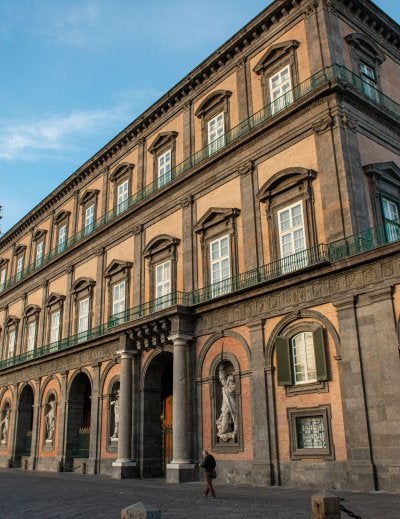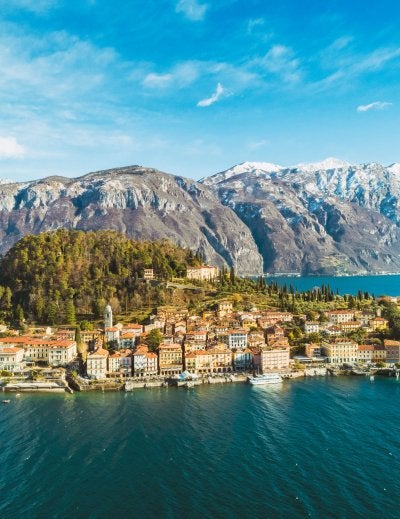
St. Mark’s Basilica: A Complete Guide to Venice’s Most Iconic Landmark
If you’re planning a trip to Venice, no visit is complete without exploring St. Mark’s Basilica. Standing proudly in the heart of Piazza San Marco, this cathedral captures the essence of Venetian history, faith and artistry. To discover more nearby landmarks, take a look at Things to do in Venice.
History of St. Mark’s Basilica
The basilica is dedicated to Saint Mark the Evangelist, the patron saint of Venice, and was built to house his relics. According to legend, in 828 AD Venetian merchants secretly took the saint’s body from Alexandria, hiding it beneath barrels of pork to avoid detection. After surviving a violent storm, the merchants brought the relics safely to Venice, an event seen as a miracle.
A church was first built near the Doge’s Palace in 832, though it was destroyed during a rebellion in 976. Reconstruction began soon after, and the present basilica took shape in 1063.
Architecture and Exterior Design
St. Mark’s Basilica is a striking blend of Byzantine, Gothic and Romanesque styles, decorated with arches, columns and mosaics that reflect Venice’s history as a crossroads between East and West. Many of its embellishments were brought back from Constantinople during the Crusades.
Western Façade
The front façade faces the square and is decorated with mosaics that portray biblical scenes such as The Last Judgement and the Resurrection. Above the left door, the Porta di Sant’Alipio mosaic shows the story of St. Mark’s relics arriving in Venice.
Southern Façade
Facing the lagoon, this side of the basilica features ornate Gothic details and a 13th-century mosaic of the Virgin Mary between two griffins. You’ll also see The Tetrarchs, an ancient statue carved from red granite and brought from Constantinople.
Northern Façade
Known as the “Door of Flowers”, this side is framed by angels and prophets and displays a nativity scene surrounded by carvings of lambs symbolising the Apostles.
The Domes
The basilica has five domes arranged in the shape of a Greek cross. The large outer domes, made from wood and covered in lead, were designed to impress approaching ships. Inside, the brick domes sit lower and are covered in intricate mosaics.
Inside the Basilica
The interior of St. Mark’s Basilica is a masterpiece of craftsmanship, filled with marble, gold, and ancient treasures.
Golden Mosaics
The walls and ceilings are covered in more than 8,000 square metres of golden mosaics, each made with real gold leaf encased in glass. The shimmering effect changes with the light, making the basilica glow differently throughout the day. The best time to see them illuminated is between 11:30 am and 12:45 pm on weekdays.
Marble Floors
Beneath your feet lies a floor of over 2,000 square metres of marble, laid out in geometric and floral patterns. Look closely and you’ll find animals such as peacocks, foxes, and even a rhinoceros among the designs.
The Pala d’Oro
This golden altar screen is one of the finest examples of Byzantine metalwork. Decorated with nearly 2,000 precious stones including pearls, sapphires, emeralds and rubies, it took centuries to complete and depicts scenes from the life of Christ.
The Treasury
The Treasury holds a vast collection of over 280 gold and silver objects, many brought back from Constantinople. You can see ancient vases, carved amphorae and a gold and silver box said to contain relics of the True Cross.
The Tomb of St. Mark
Beneath the basilica lies the crypt believed to hold the remains of St. Mark. Access is usually through guided tours held outside regular visiting hours.
Museum and Terrace
The museum contains religious artefacts and the original bronze horses known as the Quadriga, which were taken from Constantinople. Replicas now stand on the terrace, offering one of Venice’s best panoramic views of the square and the lagoon.
St. Mark’s Campanile
Next to the basilica stands St. Mark’s Campanile, Venice’s tallest building at 98.6 metres. Originally a watchtower built in the 10th century, it guided ships into the harbour and served as a city landmark.
The tower collapsed in 1902 and was rebuilt “as it was, where it was” by 1912. The five historic bells once marked daily life in Venice, from the start of the workday to public gatherings. Today, visitors can ride an elevator to the top in 30 seconds for one of the best views of the city.
St. Mark’s Square
In front of the basilica lies St. Mark’s Square, the social and cultural heart of Venice.
Highlights
- Flooding: The square is Venice’s lowest point and often floods during high tides, known as acqua alta. Since 2020, the MOSE barrier system has helped protect the area.
- Cafés and Dining: Enjoy a drink at the elegant Caffè Florian or Gran Caffè Quadri, both offering a classic Venetian experience.
- Nearby Attractions: Next to the basilica stands the Doge’s Palace, once home to Venice’s rulers. On the opposite side of the square is the Museo Correr, which explores the city’s history, and the Clock Tower, which can also be climbed for a view over the piazza.
For a quieter experience, visit early in the morning or at dusk, when the light softens and the crowds thin.
Planning Your Visit
Lines to enter St. Mark’s Basilica can be long, so booking tickets online in advance is highly recommended.
- Basilica entrance: €3
- Pala d’Oro: €5
- Museum & Terrace: €7
- Bell Tower: €10 (or €12 online)
Online combination tickets, ranging from €6 to €20, allow you to skip the ticket queue and choose a specific entry time.
Visitor Tips
- Dress code: Shoulders and knees must be covered. Bring a scarf or shawl if needed.
- Bags: Backpacks and large luggage aren’t allowed inside. A cloakroom is available nearby.
- Photography: Taking photos or videos inside is not permitted.
- Best time to visit: Early mornings and evenings are quieter, with better lighting for the mosaics.
- Equipment: Bring binoculars to appreciate the ceiling details and wear comfortable shoes for walking.
How to Get There
St. Mark’s Basilica is located in Piazza San Marco, right in the heart of Venice.
- Vaporetto (waterbus): Take line 1 to San Marco Vallaresso or line 2 to San Marco Giardinetti, both a short walk away.
- Private water taxi: Ask to be dropped off at the Todaro landing stage.
- On foot: From Piazzale Roma, it’s about a 30-minute walk following the signs to San Marco.
Visiting St. Mark’s Basilica offers an unforgettable glimpse into Venice’s spiritual and artistic heritage. From its glittering mosaics to the sweeping views from the terrace, this landmark is an essential stop for anyone exploring the City of Canals.


